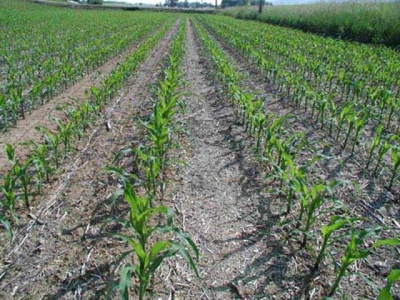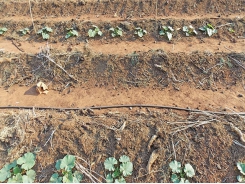A practical use for no-till farming

No-till is highly practical for small-scale vegetable farmers and organic farmers, while conventional commercial vegetable growers will find some aspects of the practice useful
For organic growers, two key advantages of no-till are that it ensures higher phytonutrient content and significantly improves the taste and texture of produce. I cannot prove the latter scientifically, but having had years of experience with conventional production involving tillage, chemical fertiliser and all the rest, I discovered that the taste, tenderness and shelf life of the crops started improving with no-till even before the organic content of the soil had reached an acceptable level and while I was still using chemical fertiliser.
This, plus improved soil quality and higher organic content under no-till, encouraged me to abandon chemical fertiliser altogether and ‘go organic’.
As regular readers of this column will know, I have never looked back. And my costs are much lower.
I suspect that taste is linked to the balance of micro-organisms involved. As soon as you till the soil, you immediately change that balance. Simply put, you create an entirely new environment which benefits certain species and is detrimental to others.
The species that operate near the roots (rhizosphere) will certainly be affected. And it may well be that the interaction of certain species in this area will affect the quality of the plant itself. As the organic content improves, so will the quality of the vegetable.
Non-chemical, not organic
Within the framework of current legislation, many of the organic products marketed as such can best be described as ‘non-chemical’ rather than genuinely organic. ‘Non-chemical’ is certainly a benefit for the consumer, but if it’s combined with a more tender, tasty and nutrient-dense product, then we really have something worth promoting.
Add competitive production costs, and this can only be good for the industry.
Many organic growers have a loyal clientele and if they have a superior product, the word spreads to their clients’ friends and the business grows. I give vegetables from my trials to friends and am often told how their friends in turn have asked where the vegetables come from as they cannot buy this taste and quality in shops.
Better for the soil and far less work!
Conventional vegetable farmers can benefit from no-till too. When I come across a farmer clean-harvesting a land of beetroot, say, on raised beds, I ask what he plans to plant next and how he intends preparing the land.
Invariably, the reply is that it will be lettuce or some other crop and he plans to use a disc- or chisel-plough and then bed up again. Very seldom will a farmer consider doing a light preparation on the existing beds and then replanting straight away on the same beds, yet this would save time, money and be better for the soil.
Often, if the soil is weed-free, he can simply transplant onto the beds with no additional work. It takes a long time to convince farmers that tillage is nearly always detrimental to the soil. The problem is that looks are deceiving – a beautifully manicured land looks neat and professional, but the reality is that the soil is overworked and suffering.
One land at a time
Still sceptical? Why not try no-till on a single land and see for yourself the changes in the soil and crops. If the results are to your liking, extend the practice to another land and so on. Applying no-till or minimum-till in vegetables will differ from farm to farm according to the crops that are grown and the climatic conditions, but it’s certainly worth a trial.
Có thể bạn quan tâm
Phần mềm

Phối trộn thức ăn chăn nuôi

Pha dung dịch thủy canh

Định mức cho tôm ăn

Phối trộn phân bón NPK

Xác định tỷ lệ tôm sống

Chuyển đổi đơn vị phân bón

Xác định công suất sục khí

Chuyển đổi đơn vị tôm

Tính diện tích nhà kính

Tính thể tích ao hồ



 There’s more to crop rotation than meets the…
There’s more to crop rotation than meets the…  Mulch ado about no-till
Mulch ado about no-till